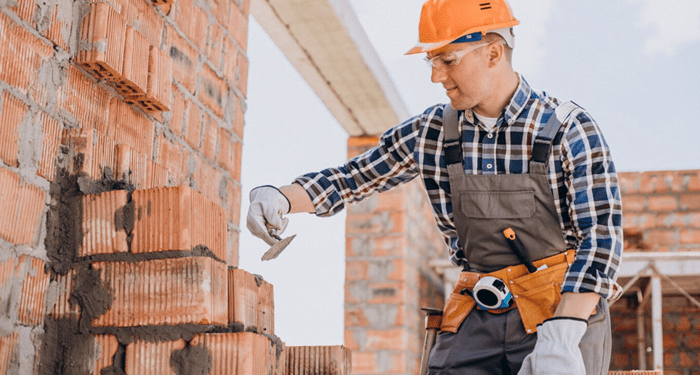When people think of demolition, they often imagine chaos—walls crashing down, dust flying, and the dramatic end of a building’s story. But in the world of light demolition, the narrative is quite the opposite. It’s not an end, but a beginning—one that requires control, precision, and thoughtful execution.
Whether you’re remodeling a kitchen, updating a commercial suite, or removing outdated elements in your home, light demolition is often the first step. Understanding what happens before, during, and after the process can help property owners feel prepared, reduce risks, and save time.
Before Demolition: Planning the Invisible Work
Before a single tile is lifted or a cabinet removed, there’s a lot that needs to happen behind the scenes.
1. Evaluation of the Site
The process begins with an assessment of the space. This is where professionals look for structural nuances, existing systems (electrical, plumbing, HVAC), and materials that might present hazards—such as mold, lead-based paint, or asbestos.
Understanding the layout and systems within a building helps prevent accidental damage to load-bearing walls or vital infrastructure. It also gives insight into what equipment will be needed and how long the work might take.
2. Defining the Scope
Not all demolition is created equal. Light demolition includes projects like removing flooring, taking down non-load-bearing walls, or clearing out fixtures like sinks and counters. Defining the scope ensures only what’s necessary gets removed—saving time, materials, and money.
This step also helps outline the impact the demolition might have on surrounding rooms, tenants, or operations.
3. Safety Precautions and Permits
Even smaller demolition jobs require safety prep. Ensuring all utilities are properly shut off, identifying protective gear, and establishing disposal protocols are critical. And depending on your city, permits might be required—even for minor work.
Experienced teams like Dump Brothers assist with compliance and safety strategy, avoiding any hiccups down the line.
During Demolition: Precision Over Power
Once the groundwork is laid, the visible action begins—but it’s not the mayhem one might expect.
1. Organized Removal
Light demolition involves selective removal. Rather than tearing into walls with brute force, teams use saws, crowbars, and other hand tools to carefully extract the materials.
Think of it more like a deconstruction. For example:
- Cabinets are unscrewed, not smashed.
- Flooring is lifted in manageable sections.
- Drywall is scored and removed, not kicked down.
This approach protects surrounding areas and makes cleanup easier.
2. Waste Sorting
Not all debris is garbage. Much of what gets removed during demolition—like wood, tile, and metal—can be recycled or reused. This makes the demolition process more sustainable and cost-effective.
Sorting waste as it’s removed also prevents clutter and trip hazards, keeping the workspace safer for everyone involved.
3. Dust and Debris Management
Dust control during demolition is essential, especially in occupied spaces or properties with active HVAC systems. Barriers like plastic sheeting, air scrubbers, and negative air pressure machines help contain dust to the work zone.
This prevents airborne particles from spreading to adjacent rooms and ensures quicker recovery time once the project is complete.
After Demolition: Setting the Stage for What’s Next
Demolition isn’t just about what’s taken away—it’s about what comes next. The post-demo phase is equally important in preparing the space for new construction or design elements.
1. Surface Prep and Repairs
Once materials are removed, the surfaces beneath are assessed. This might involve smoothing walls, leveling floors, or reinforcing structural elements. Even in light demolition, exposed studs, concrete slabs, or subfloors need attention before new materials can be added.
Uncovering hidden damage is common during this stage—rot, water issues, or code violations. These need to be addressed before rebuilding begins.
2. Site Cleanup
Every quality demolition job ends with a thorough cleanup. This isn’t just about removing bulk debris; it includes vacuuming fine dust, removing nails and staples, and ensuring the area is safe for the next phase of work.
Skip this step, and the next contractor walks into a mess. Complete it properly, and your renovation progresses smoothly.
3. Documentation and Inspection
Post-demolition inspections help confirm everything was removed according to plan and that no utilities were compromised. This may also be the time to update your contractor or architect with new measurements or discovered issues.
Good record-keeping here is crucial, especially for large-scale renovations or properties regulated by building codes.
Why Light Demolition Deserves Attention
While not as visually striking as full-scale demolitions, light demolition plays a crucial role in property upgrades. It’s often the key to unlocking creative design ideas and structural improvements without disturbing the entire building.
And with the rise of home remodels, office conversions, and sustainable construction, the demand for skilled light demolition contractors continues to grow. It’s not just about what gets torn down—it’s about how it’s done, and how it sets the tone for everything that follows.
Two Keywords, One Message: Value in Simplicity
Keywords like demolition contractor and light demolition aren’t just buzzwords. They represent expertise in planning, executing, and cleaning up a space in a way that maximizes efficiency and minimizes stress. They reflect a growing understanding among property owners that removing the old is just as strategic as building the new.
Conclusion: Trust the Process, Respect the Work
Light demolition might sound simple, but when done right, it’s an art. It combines efficiency, safety, and foresight in a way that few phases of construction or renovation can match. And behind every clean tear-out or perfectly prepped surface, there’s a team that knows the difference between ripping out and carefully removing.
Teams like Dump Brothers understand the value of getting it right from the start. With experience, proper tools, and respect for the process, they help pave the way for what comes next—without drama, without damage, and without delay.










































































